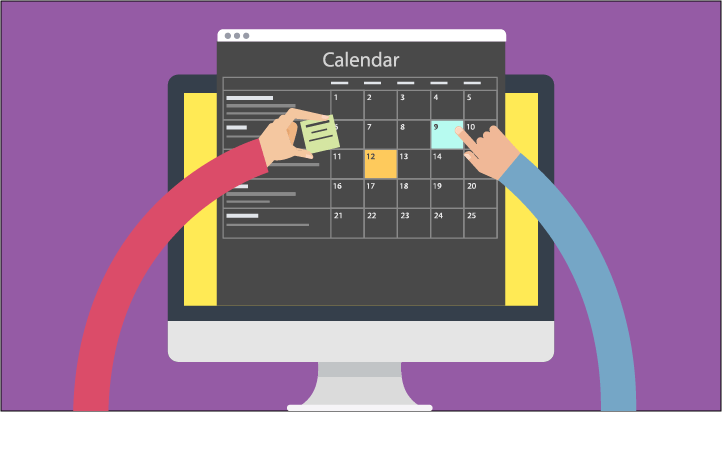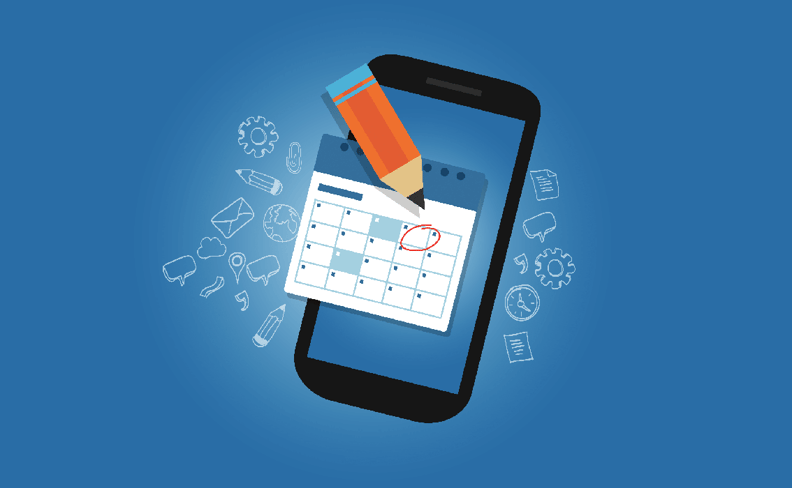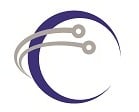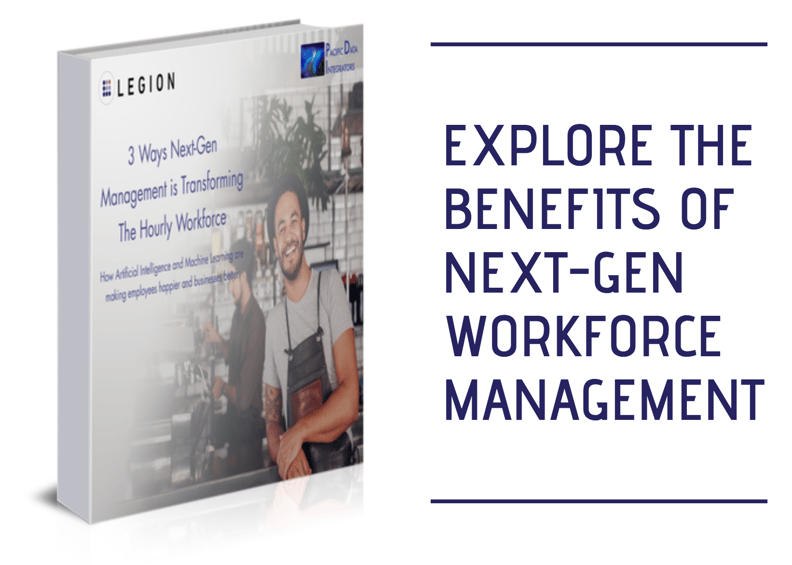Employee management software is nothing new. What is new are employee scheduling tools that take advantage of artificial intelligence, automation, the app platform, and more. In fact, we are currently in the middle of an explosion of employee scheduling apps that are leveraging these new technologies.
This difference between short-lived tools and tools that are redefining employee engagement, is how they integrate these cutting-edge technologies. Established employee management companies often try to tack on new options as an afterthought, rather than redesigning their core product, which leads to a disjointed and ineffective product. On the other hand, startups frequently latch onto new ideas in an attempt to become the next Facebook or Uber. These trendsetters nearly always lack staying power, flare out, and disappear after a few years.
Does this mean companies can either choose a newcomer and hope they pick one of the good ones, or stick with a traditional employee management company and miss out on the benefits of untapped technological advances? Not if you know what to look for!
The best scheduling apps are built around artificial intelligence and other recent advances, with a long-reaching employee engagement strategy. Let’s dive into the essential options every strong scheduling tool offers. Forget the flashy perks with buzz-word packed descriptions – we distilled an employee scheduling tool down to the key options that deliver tangible, real-world value. Find a tool that offers these, and you’ll know you found a keeper.
Automated Scheduling Based on Employee Availability
This is the foundation of any employee scheduling tool. Managers often struggle to create a schedule that fills every slot and are far too overworked to keep each individual’s shift preferences in mind.
Modern scheduling tools track team members’ availability and can produce a work schedule within seconds. They provide options for employees to mark their availability and preferred shift times, enabling the tool to create an optimal schedule that gives as many team members their preferred shifts as possible. The best tools also monitor schedules for compliance with company policies and government regulations, alerting managers if any rules are broken by schedule changes.
The best scheduling tools also include an app that employees can log onto in order to update their availability and preferences. Not only is this one less item on a manager’s to-do list, but giving individuals ownership over their own schedule boosts employee satisfaction. Some tools let staff request time off within the app, further giving team members ownership. Managers set a maximum number of people who can take each day off, so when employees login they clearly see what days are available to request time off. The staff member requests time off, the manager receives a notification, and once approved the schedule is updated. All of this takes place with a few taps of a button!
To summarize, you want a tool that tracks employees’ shift preferences, automatically creates optimized schedules, and gives staff members the ability to easily update their preferences and request time off within an app.

Flexibility & Predictability
Flexibility and predictability are two of hourly employees’ top priorities. Retail employees actually value flexibility over every other benefit, including pay. Meanwhile, last-minute schedules result in nearly half of hourly employees being unable to anticipate when they are working week to week, with 45 percent reporting that last-minute changes to their work schedules occur frequently. None of this creates a healthy work/life balance and can cultivate a culture of stress.
Automated scheduling empowers managers to send out optimized schedules ahead of time, instead of scrambling to throw one together last minute. This is already a huge step towards what employees want, but the best tools don’t stop there.
Tools can now automate shift swaps as well. Gone are the days of having to call every coworker you can think of, trying to get someone to cover you, and then having to run any changes past your manager. Scheduling tools empower team members to swap shifts within an app. Two individuals can exchange shifts with the press of a button. On the other hand, if an employee needs to switch but doesn’t know who can cover them, a swap request is sent out to other staff members. And don’t forget, since the schedule is updated in real time within the app, everyone will always have access to the latest version.

Bonus: Sales Forecasting
Historically, sales forecasting has been used at the corporate level. At individual stores, it has only been broadly utilized in the sense that stores have more team members on the floor during holidays and predictable ‘busy hours,’ such as mornings at Starbucks.
When sales forecasting is inaccurate, the consequences have a domino effect. Overstaffed stores waste money, while understaffed locations drive away customers, stress out employees and managers, and hurt revenue. There is more data available today than ever before, yet sales forecasting proves elusive as companies struggle to leverage this onslaught of data.
The good news is, this struggle of manual data wrangling doesn’t have to continue. Legion’s platform leverages advances in artificial intelligence (AI) and machine learning to tackle massive amounts of data and extract accurate, actionable sales forecasts. This data-driven tool can leverage thousands of data points and learn from that data, representing a fundamental shift in the way companies predict sales. Legion processes data from any industry and predicts sales demand at the finest granularity, from store locations to product SKUs, by learning from past sales, traffic patterns, and seasonality data.
More accurate staffing will make managers, employees, and even customers happier. This is why Legion is our ultimate choice for an employee scheduling tool.
Conclusion
Workforce management best practices are essential. When you choose the right workforce scheduling tool, the benefits will have a positive effect on customer satisfaction, managers’ stress levels, employee satisfaction, and the savings seen by corporate. If you are ready to see AI and machine learning in action, request a custom demo of Legion’s workforce engagement platform.

Posted by PDI Marketing Team
Pacific Data Integrators Offers Unique Data Solutions Leveraging AI/ML, Large Language Models (Open AI: GPT-4, Meta: Llama2, Databricks: Dolly), Cloud, Data Management and Analytics Technologies, Helping Leading Organizations Solve Their Critical Business Challenges, Drive Data Driven Insights, Improve Decision-Making, and Achieve Business Objectives.





